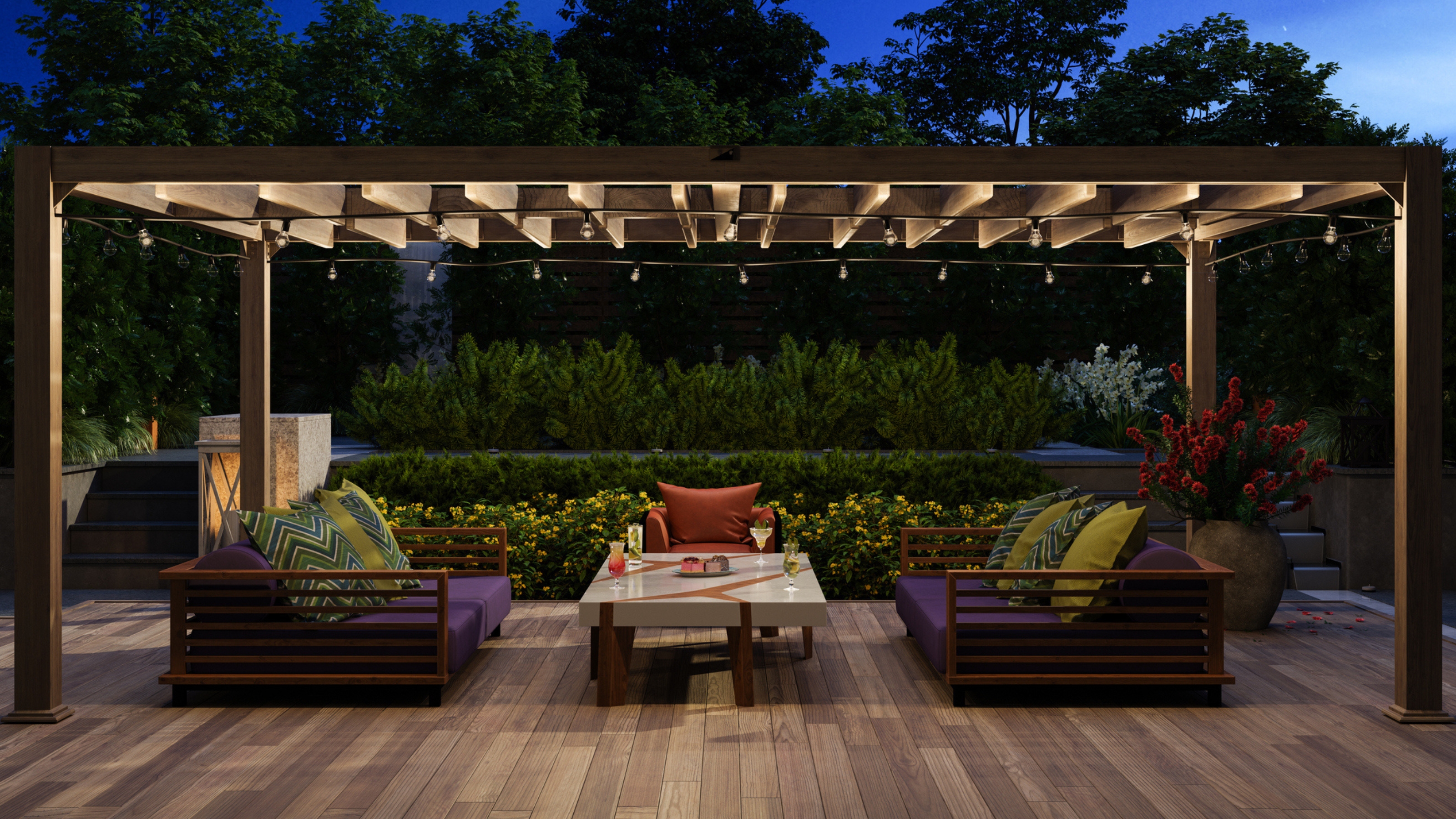
Knowing what decking privacy mistakes to avoid is key to achieving a serene outdoor space you'll want to return to day after day.
From selecting the wrong materials to overlooking vital functionality, our landscaping experts reveal six of the most common decking privacy slip-ups and guide you through what to do instead.
If you're looking for backyard privacy ideas to protect your peace and comfort, knowing the decking disasters to avoid is just as important as those top tips for tranquility.
Dodge these 6 decking privacy mistakes
As with patio privacy mistakes, there's a lot to factor in if you want to create a private space that still has charm and soaks up the sun.
Where our pros have suggested products, we've sourced high-quality items from reliable retailers.
All prices correct at the time of publication.
1. Poor placement
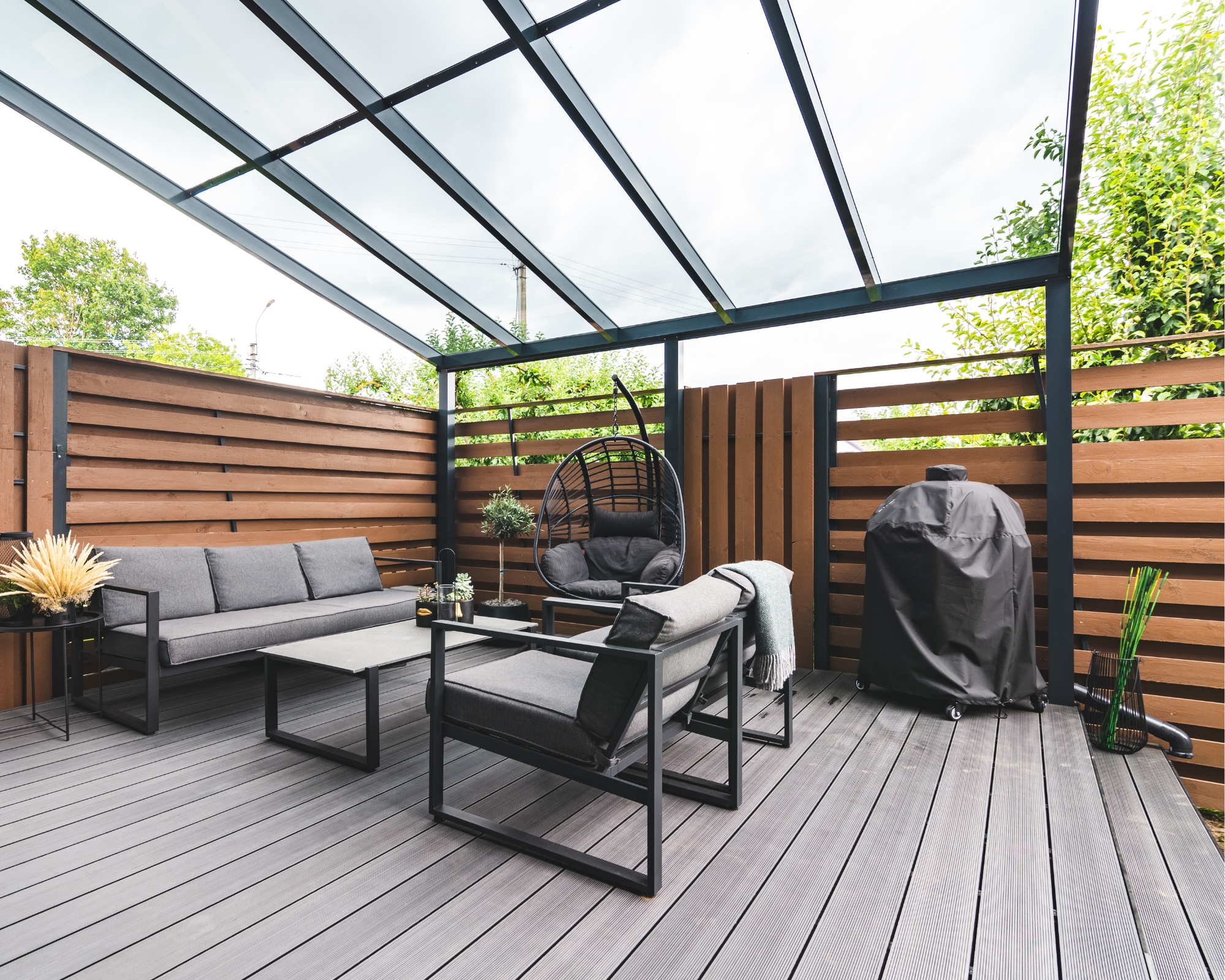
The placement of your feature is crucial and poor placement is one of the most common decking privacy mistake mistakes. This includes failing to fully consider the angles and lines of sight from neighboring properties or public areas.
Sal Musto, founder of SalCorp Landscaping & Construction, says, "Many fail to analyze sight lines adequately, resulting in privacy screens or plants that don’t effectively block views. Always assess from multiple vantage points, both from your deck and neighboring properties."
Walk around your property, and if possible, observe from your neighbors’ perspectives to identify the most vulnerable spots. If you can't do that, stand or sit where your deck will be and see if you can see your neighbors, windows, or public paths. If you can see them, they will be able to see you.
Sal adds, "Strategic placement is key. Consider custom-height screens or tall, densely-packed shrubs like miscanthus or fountain grass to ensure all sightlines are blocked."
Other spacing considerations include allowing wood to breathe and ensuring the decking isn't too closed off.
Bryan Clayton, CEO of GreenPal, says, "Folks often underestimate the importance of proper spacing and ventilation. This isn't just about ensuring the wood can breathe and dry out to prevent mold and rot — it's also about comfort. Too tight a space can feel claustrophobic, while too open can defeat the purpose of privacy."
Ensure that any privacy screen you opt for is going to provide the coverage you need all year round.
Steve Sylva, owner of Steve's Services, says, "Often, homeowners install privacy screens that are either too short or too sparse, failing to provide adequate coverage. To avoid this, measure the exact height and length needed for privacy considering factors like neighboring properties and current landscaping features.
"You can invest in custom-built options tailored to fit your specific dimensions for a more personalized solution that blends seamlessly with your deck, or — if you're not certain on the coverage you'll need — adjustable privacy screens are the way to go."
This Fency Privacy Metal Screen Fence from Wayfair comes in a choice of three colors, while this DOEWORKS Expandable Fence Privacy Screen from Amazon is decorated with two-color faux ivy and can stretch to 116 inches in width.
Strategic placement of privacy elements, such as screens, pergolas, or trellises, can make a significant difference in achieving true seclusion.
2. Flimsy materials
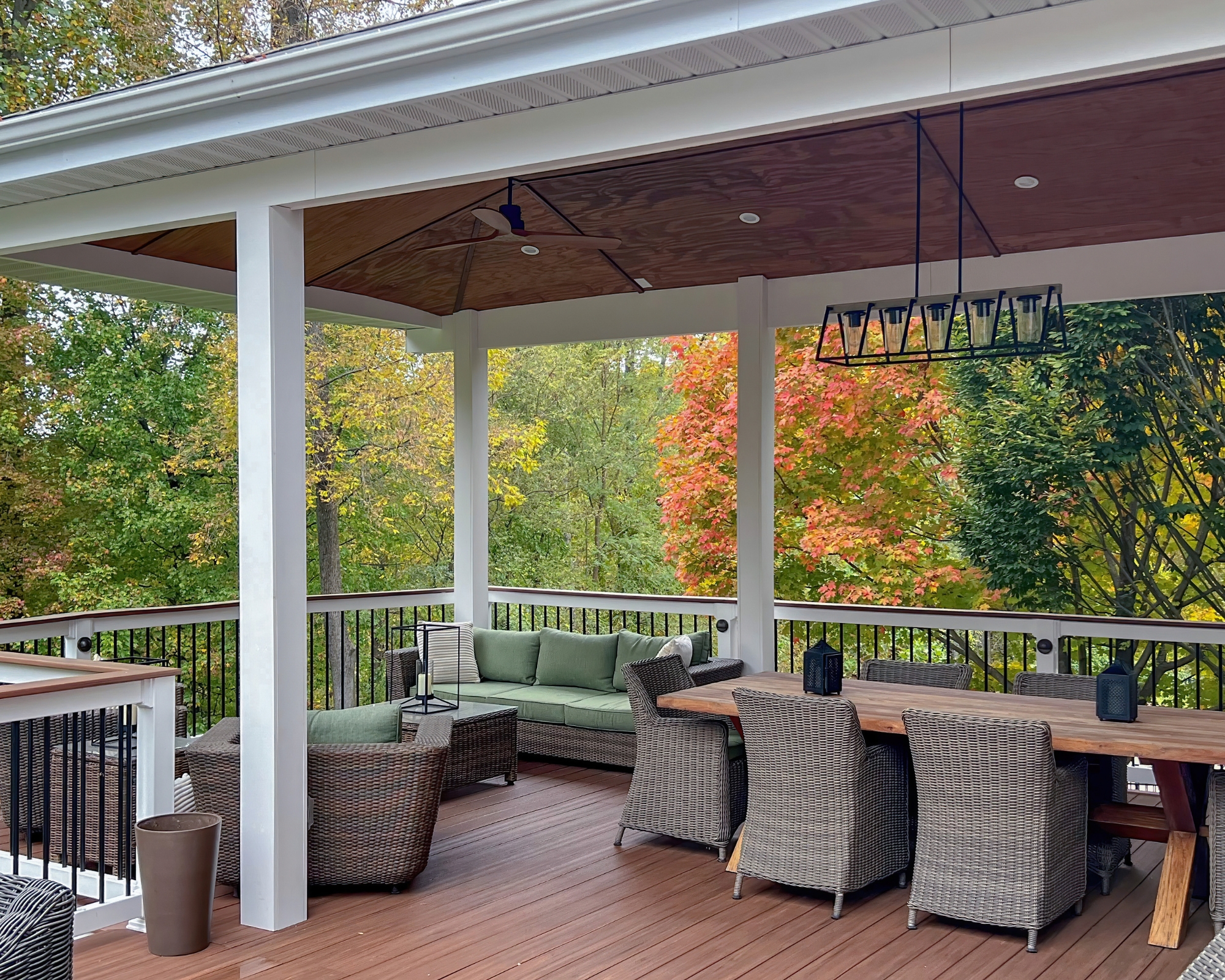
Opting for low-quality or flimsy materials is another common pitfall. Privacy features need to be durable enough to withstand the elements, including wind, rain, and sun. Thin, weak materials can deteriorate quickly, becoming an eyesore and failing to provide adequate privacy.
Sal says, "Choosing unsuitable materials is another common mistake. Homeowners often opt for materials that cannot withstand outdoor conditions, leading to frequent replacements and high maintenance costs."
Invest in high-quality outdoor materials such as treated wood, metal, or composite options designed for exterior use. These materials not only last longer but also offer better stability and resistance to weathering. Moreover, solid construction ensures that your privacy features remain effective and attractive for years to come.
The UPGRADE Privacy Fence from Amazon comes in multiple colors and is made from non-recycled high-density polyethylene to ensure lasting durability. The Kozyard Morgan Outdoor Aluminum Pergola from Wayfair is rust-resistant and has a retractable sunshade canopy.
Sal adds, "I recommend using weather-resistant materials like composite panels or pressure-treated wood. Products like trex privacy screens are particularly durable and require minimal upkeep, making them ideal for long-term solutions."
This heavy-duty KANAGAWA Privacy Screen Fence from Amazon is so strong and durable that it comes with a five-year full refund or replacement warranty.
3. Inadequate anchoring
Even the best decking materials won't serve their purpose if they aren’t properly anchored. A common decking privacy mistake is failing to secure privacy screens, fences, or pergolas adequately.
Sal says, "Ignoring structural stability can make privacy additions hazardous, especially in windy conditions. Always ensure your privacy elements are securely anchored to the deck structure using corrosion-resistant hardware.
"Integrating planters with deep-rooted plants can provide additional stability and natural aesthetics. For instance, using stone planters filled with bamboo provides both privacy and a solid anchoring solution."
The Luxenhome Round Tapered Flower Pot Planter from Target is sturdy and weather-resistant.
Tom Bruzek, land buying specialist at Selling Land Fast, says, "Always ensure the posts supporting privacy screens are securely anchored into the ground or deck frame. Consider the wind load to make sure the screens can withstand strong gusts, and if unsure, hire a professional to guarantee stability and safety."
Tom recommends the Simpson Strong-Tie Post Base from Home Depot for its robust support and anchoring. Tom also likes the Titan Deck Foot Anchor from Amazon — ideal for securing deck posts without the need for concrete.
Using concrete footings for ground-based installations or robust brackets and bolts for deck-mounted elements can provide the necessary stability. Proper anchoring is essential not only for safety but also for maintaining the intended privacy.
4. Not thinking multifunctional
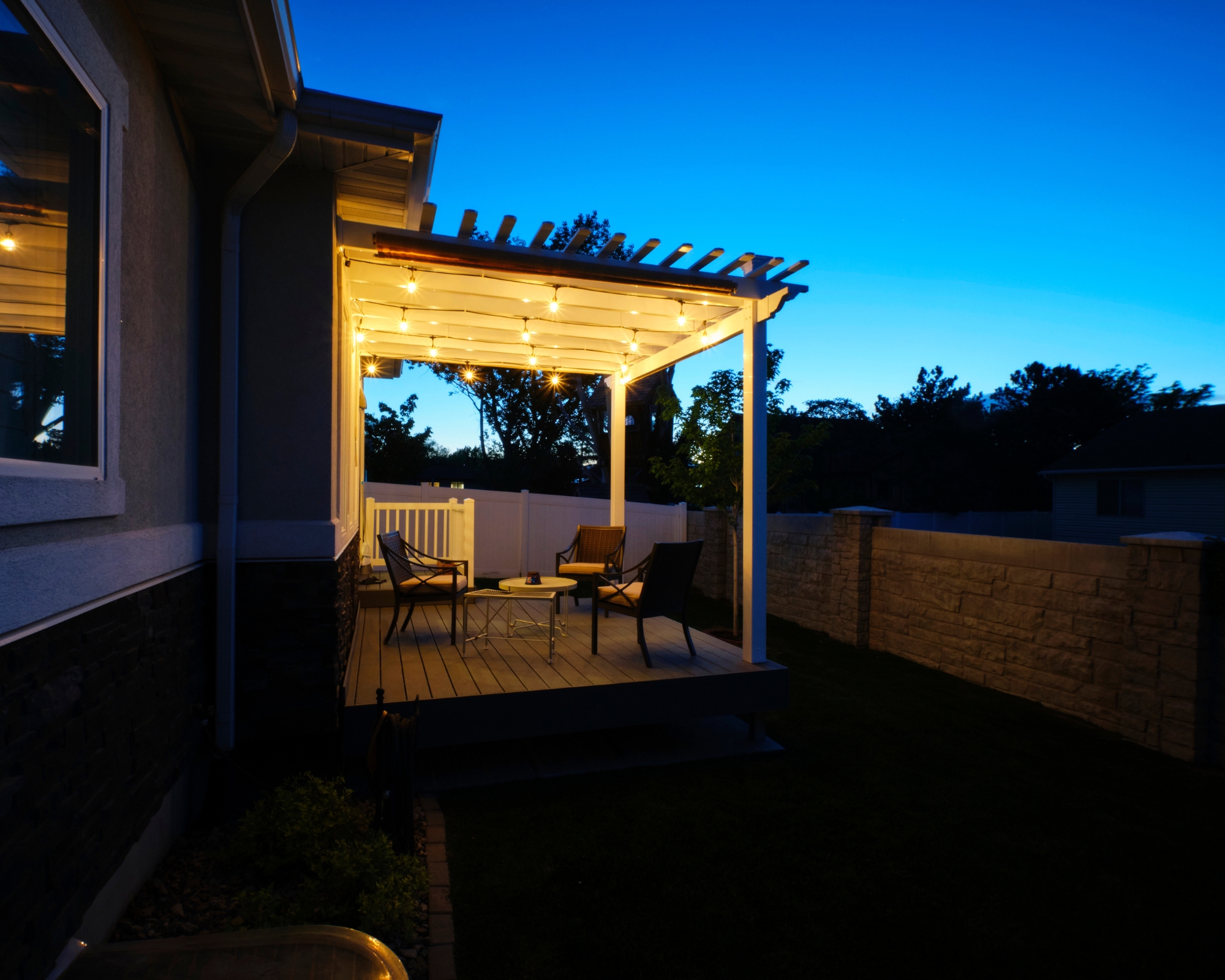
Another decking privacy mistake is overlooking the multifunctional potential of privacy features.
Your deck privacy solutions can do more than just block views; they can also provide shade, storage, or even aesthetic appeal. For instance, a privacy screen can double as a vertical garden, adding greenery and vibrancy to your deck while blocking prying eyes. Pergolas can be equipped with retractable canopies for adjustable shade.
Tom says, "Installing privacy elements that serve only a single purpose can lead to wasted space and missed opportunities for added functionality. Instead, opt for privacy screens that double as vertical gardens or storage units, build benches with high backs that serve as privacy screens, and incorporate lighting into your privacy features for added ambiance and usability at night."
Tom recommends this Outland Living Privacy Screen with Planter Box, available from Amazon, which combines privacy screening with a planter box for added greenery and space efficiency. He also likes the Vifah Acacia Wood Outdoor Planter Box with Trellis from Home Depot LINK REQUIRED — another option for combining privacy with a place for plants.
For added ambiance, these Newhouse Lighting Weatherproof LED Lights from Walmart come with a remote control so you can easily adapt shine according to your privacy needs.
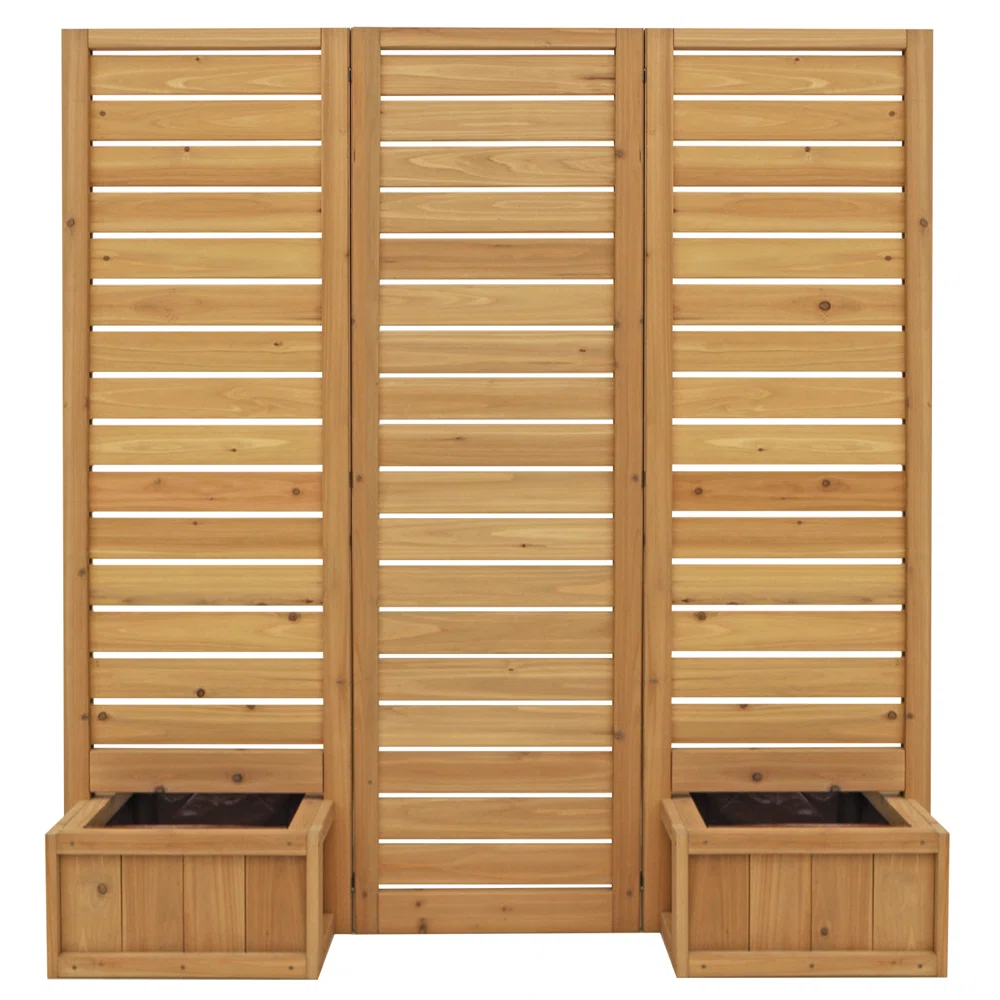
Size (in.): H66 x W62 x D19.5
Made from: Cedar
Price: $303.70
Made from 100% premium exterior grade cedar lumber, this privacy screen comes with integrated planters and slat panels to help maximize your garden space.
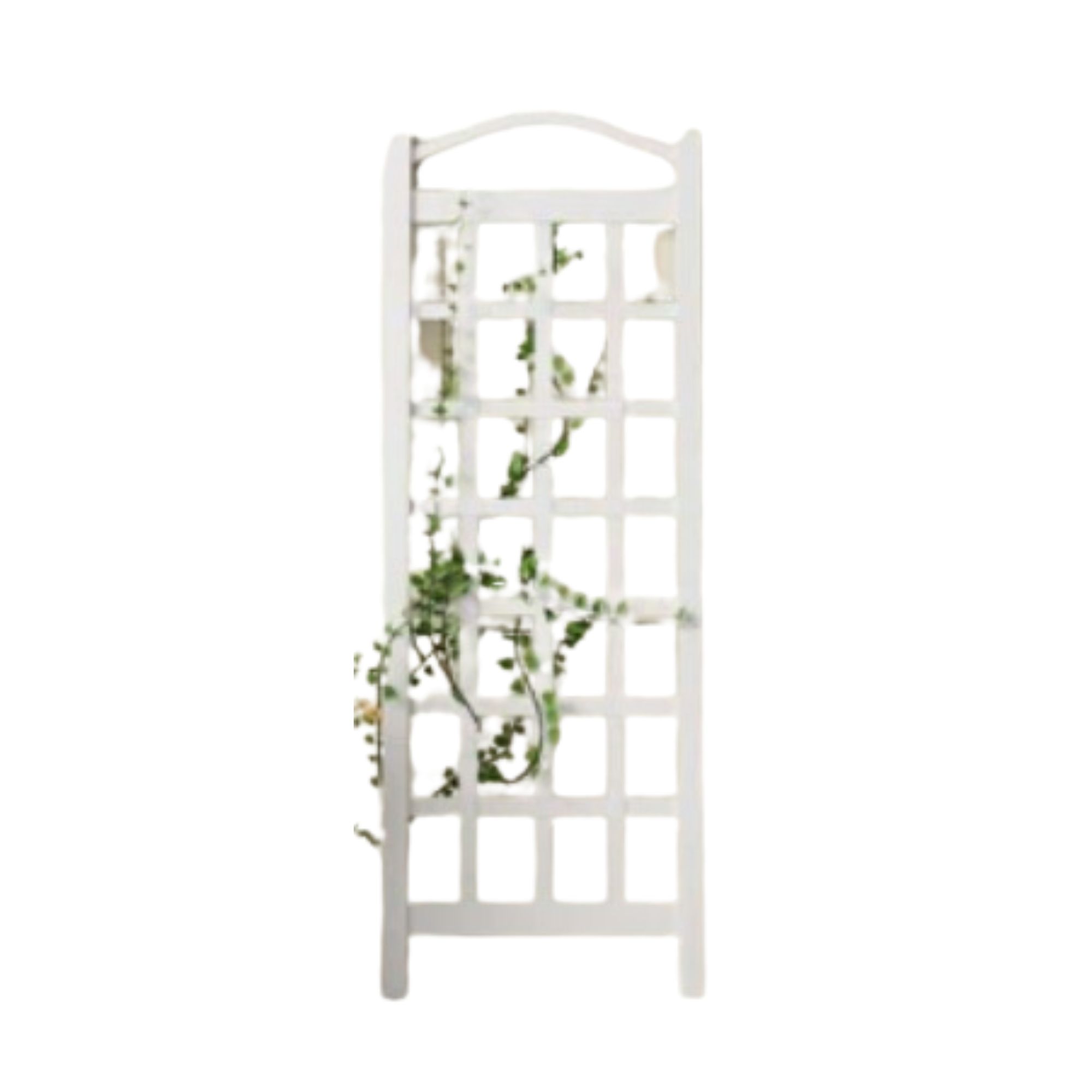
Size (in.): H76 x W28 x D2
Made from: Vinyl
Price: $55.99
Make the most of vertical space by installing this sleek and stylish trellis from Wayfair, which resists UV rays and fading while providing a sturdy structure for plants.
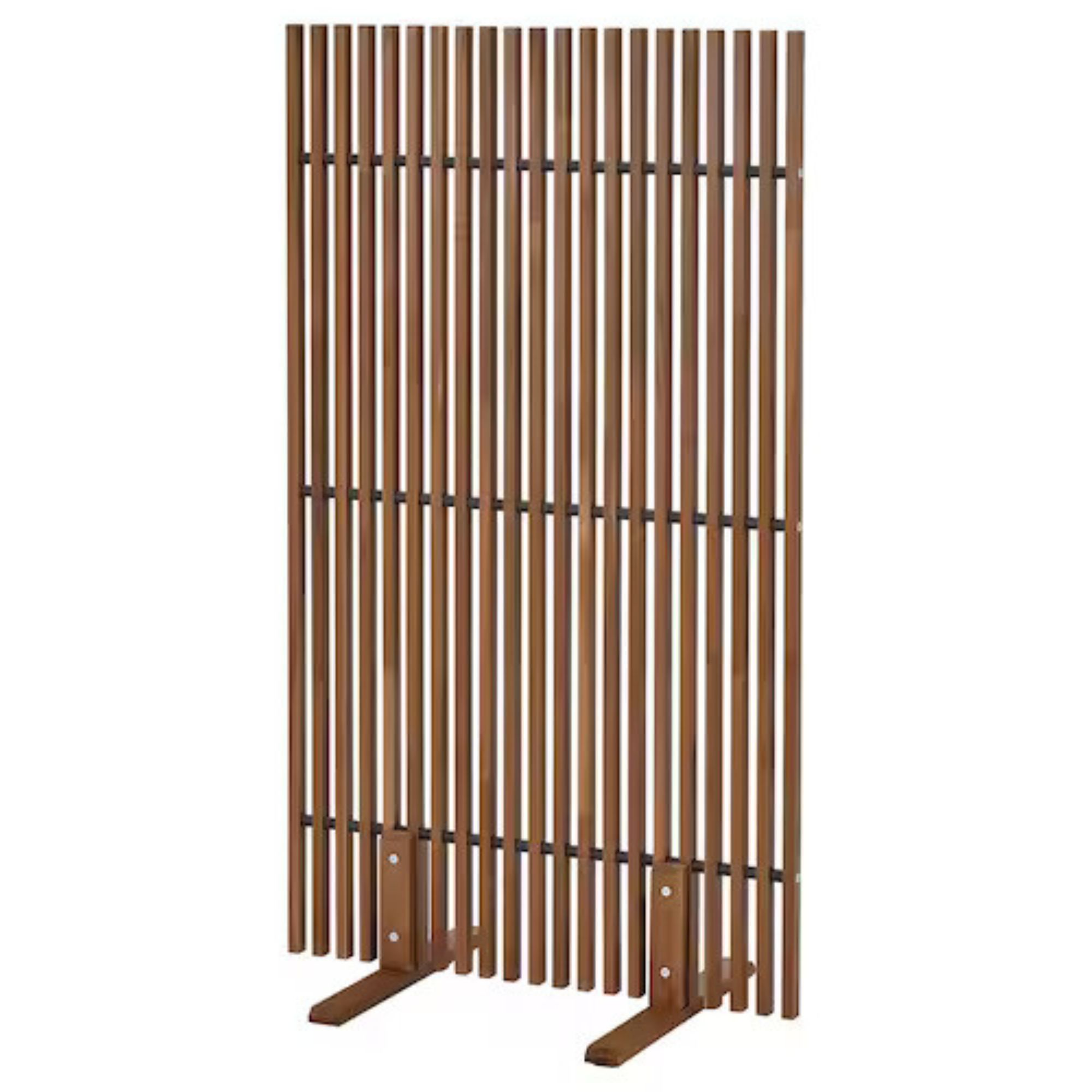
Size (in.): H55.1 x H31.5 x D19.6
Made from: Wood
Price: $95
This Scandi-style privacy screen allows in light while still offering seclusion, so you can top up your tan in peace. It works well for climbing plants, but also looks great as it is.
5. Poor plant selection
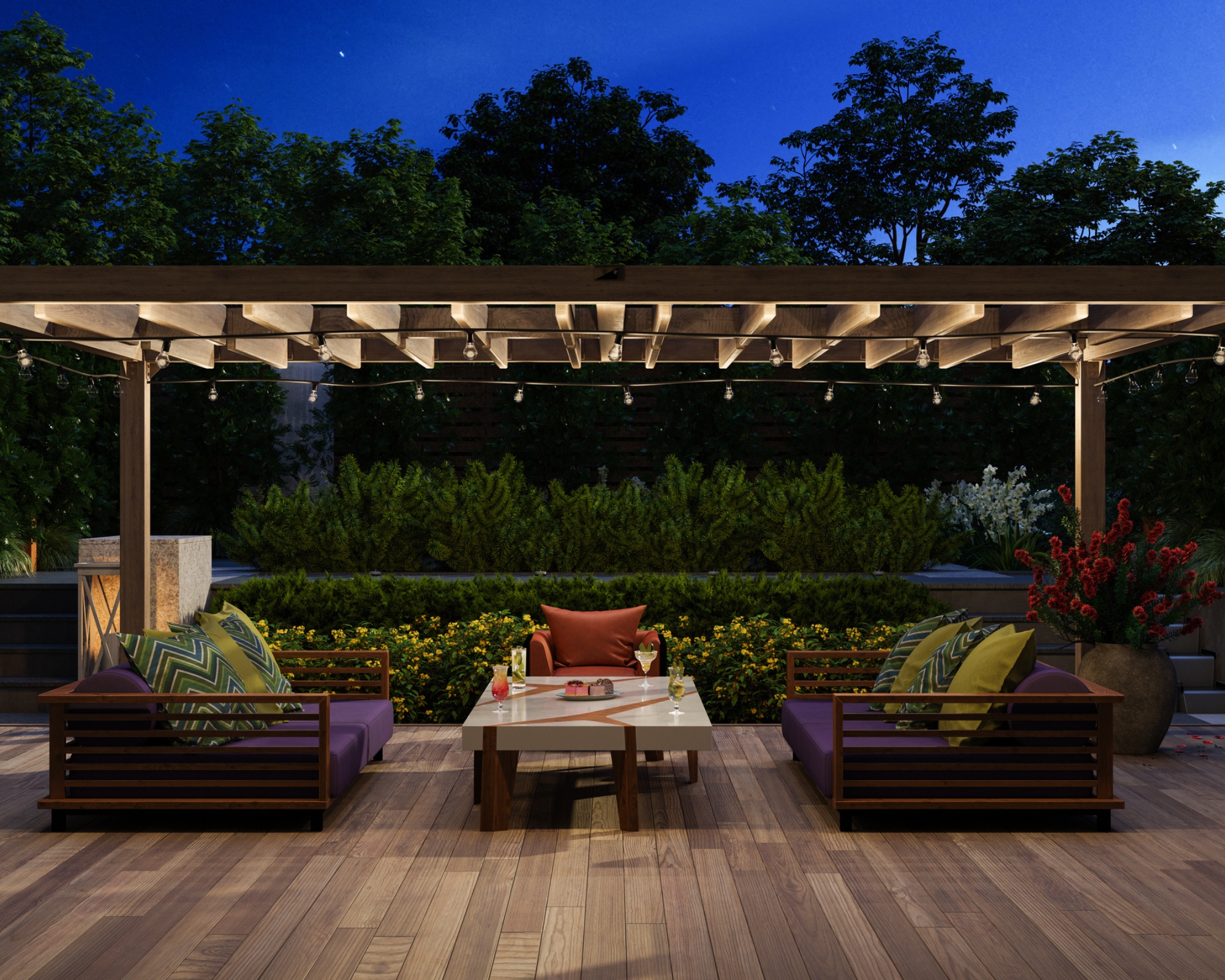
Privacy plants are a popular choice for shielding decks, but selecting the wrong plants can lead to frustration. Some plants might not grow tall or dense enough to provide adequate screening, while others may require more maintenance than you’re prepared for.
Steve says, "Choosing the wrong plants for your deck's location can result in privacy hedges that don’t thrive or provide full coverage. Always research plant species that are suited to your local climate (you can check your US gardening zone in our guide) and soil conditions.
"For example, in Massachusetts, plants like Arborvitae and Boxwood are excellent choices for creating natural privacy barriers. These plants are hardy and provide dense coverage, making them ideal for creating a secluded deck area."
Researching plant varieties that thrive in your climate and suit your maintenance preferences is crucial. Evergreen shrubs, tall grasses, and fast-growing vines are often excellent choices for creating natural privacy barriers.
Additionally, consider the mature size of the plants to ensure they fit well in the available space without overwhelming your deck.
Bryan says, "A really common mistake is not planning for the long-term view. Sometimes, folks throw up a privacy screen without thinking about how trees, shrubs, and other elements will mature. You’ve got to envision how the space will evolve; what offers privacy today might not cut it in a few years."
The Fire Chief Evergreen Thuja from Amazon looks great and can grow up to four feet.
6. Overlooking aesthetics
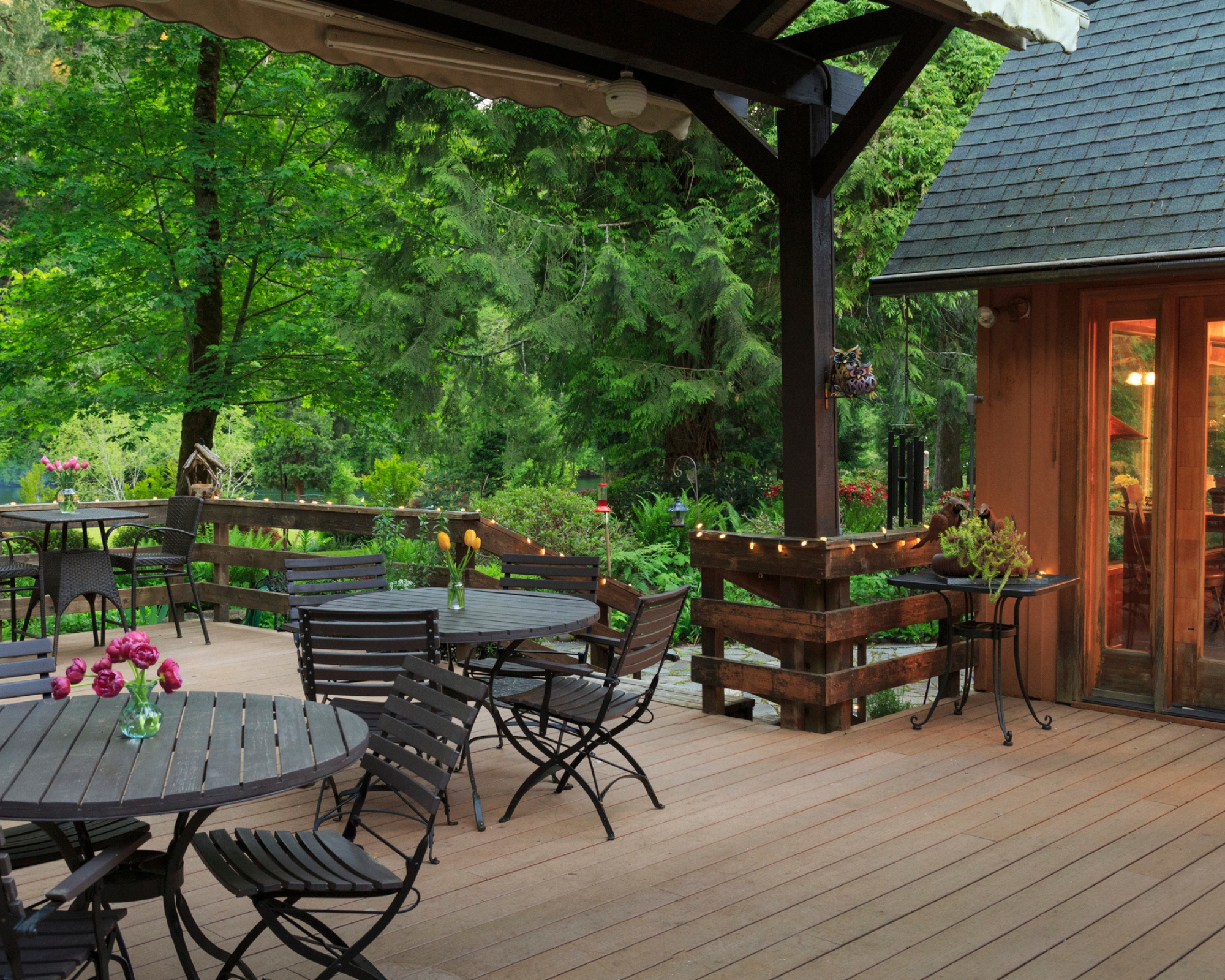
Finally, overlooking the aesthetics of your privacy solutions can result in a deck that feels more like a fortress than a retreat, making it a decking privacy mistake to truly avoid. Privacy elements should complement the overall design of your deck and home. Clashing styles or unsightly materials can detract from the beauty of your outdoor space.
Steve says, "Privacy features that look out of place can mar the overall beauty of your outdoor space. Integrate privacy elements into the existing design by using materials and colors that complement your deck. For instance, if your deck uses natural wood, consider wooden lattice screens stained to match or privacy trellises adorned with climbing plants like clematis or ivy."
The Costway Premium Outdoor Wooden Pergola from Target is made from high-quality fir wood for durability and looks gorgeous.
Take the time to select designs, colors, and materials that harmonize with your existing decor. For example, if your deck has a rustic feel, opt for natural wood screens and lush greenery. If you prefer a modern look, sleek metal panels and minimalist planters might be more appropriate, if you are planning a cottage garden, layer plants for privacy (you could use a series of arches to obstruct the neighbors' view), and have vertical gardens around your decking for privacy.
Balancing functionality with aesthetics ensures that your privacy features enhance rather than detract from your deck’s appeal.
Meet our landscaping pros
So there you have it — six decking privacy mistakes to avoid, and what to do instead. By following these expert tips, your decking area can become a secluded outdoor retreat you'll enjoy for years to come.
Next, check out these nine backyard privacy mistakes to avoid.







